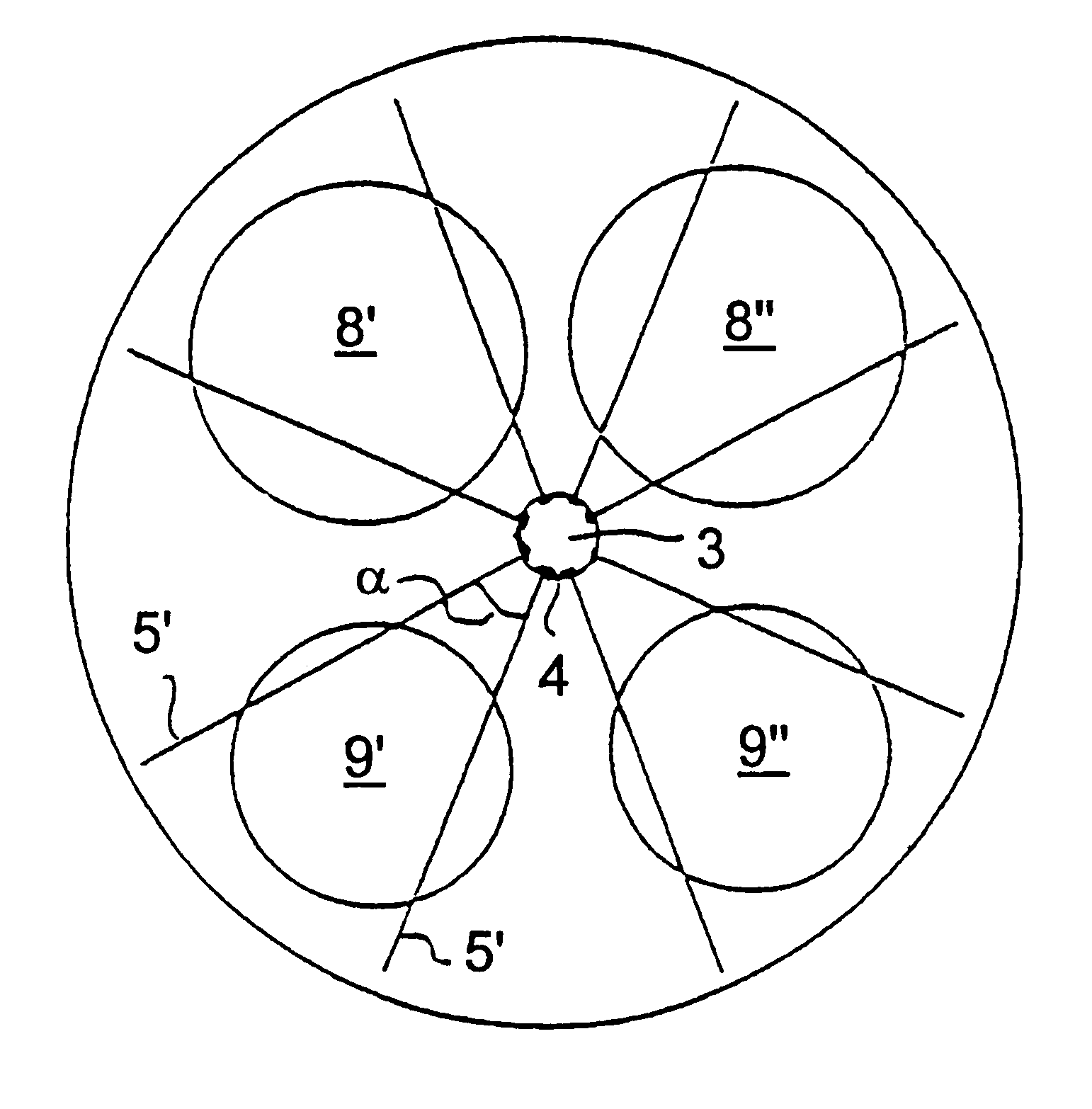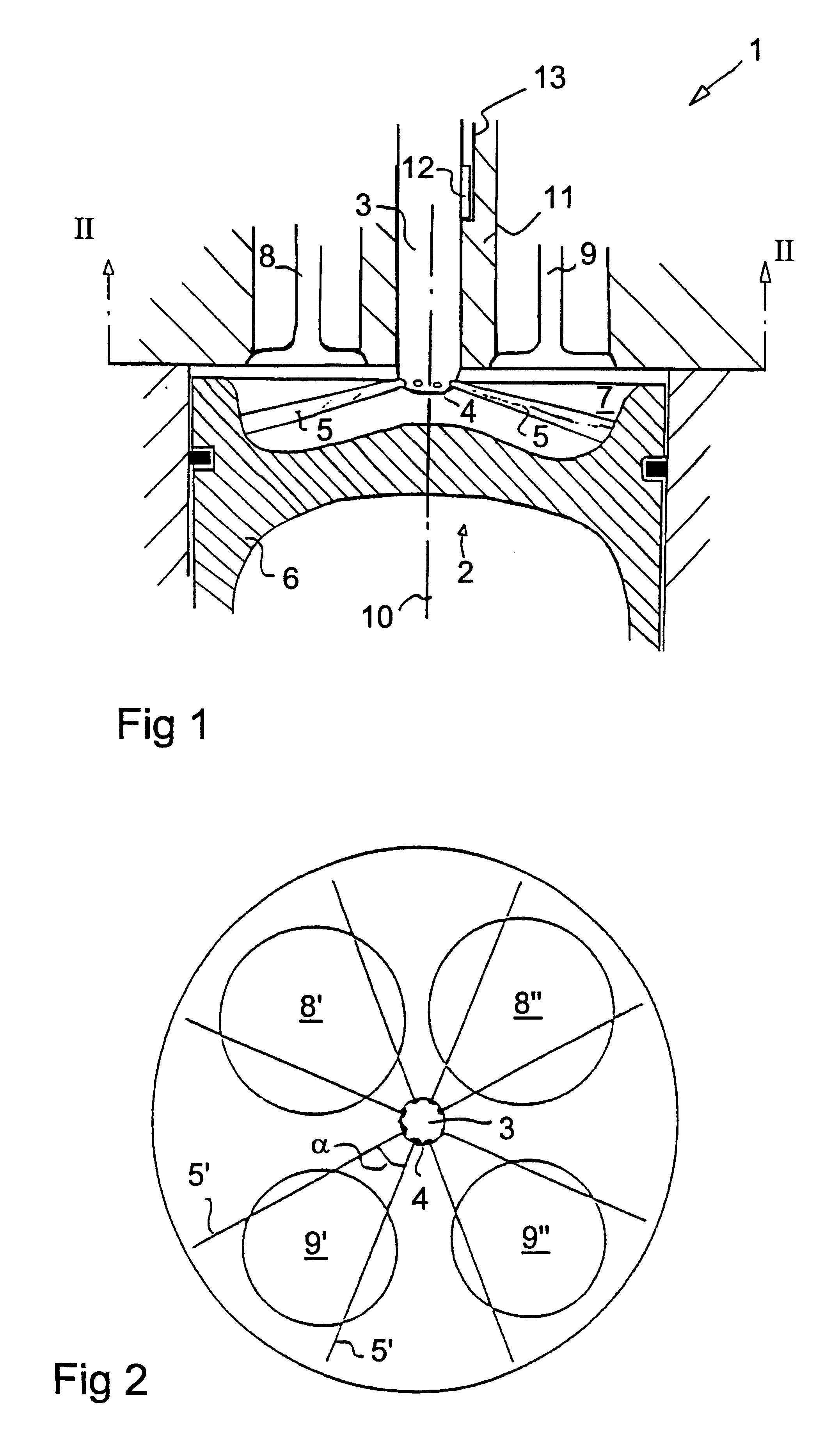Internal combustion engine with fuel injection
a fuel injection and combustion engine technology, applied in the direction of machines/engines, mechanical equipment, cylinders, etc., can solve the problems of affecting the discharge of nitrogen oxides, the combustion process is very complicated, and the inability to commence fuel injection too early,
- Summary
- Abstract
- Description
- Claims
- Application Information
AI Technical Summary
Benefits of technology
Problems solved by technology
Method used
Image
Examples
Embodiment Construction
FIG. 1 depicts a four-stroke four-cylinder combustion engine 1, and more specifically a piston engine in the form of a diesel engine intended to drive a heavy-duty vehicle such as a truck or a bus. FIG. 1 shows only one cylinder 2, since all the cylinders are identical in form. The combustion engine 1 is provided with direct injection and has for this purpose in each cylinder a fuel injector 3 which, via a number of fuel nozzles 4, can deliver fuel sprays 5 in various directions in the cylinder 2. These fuel sprays 5 are in a conventional manner directed somewhat downwards along the shell surface in a conical shape. When a piston 6 in the cylinder is in an upper position, these fuel sprays 5 are directed into a recess 7 at the top of the piston 6. The cylinder 2 contains not only the piston 6 and the fuel injector 3 but also a number of valves 8,9 in the form of disc valves between which the fuel injector 3 is arranged, advantageously centrally. At least one valve 8 constitutes an i...
PUM
 Login to View More
Login to View More Abstract
Description
Claims
Application Information
 Login to View More
Login to View More - R&D
- Intellectual Property
- Life Sciences
- Materials
- Tech Scout
- Unparalleled Data Quality
- Higher Quality Content
- 60% Fewer Hallucinations
Browse by: Latest US Patents, China's latest patents, Technical Efficacy Thesaurus, Application Domain, Technology Topic, Popular Technical Reports.
© 2025 PatSnap. All rights reserved.Legal|Privacy policy|Modern Slavery Act Transparency Statement|Sitemap|About US| Contact US: help@patsnap.com


